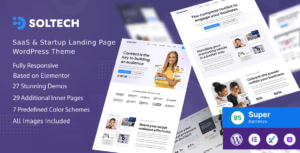Do you ever find yourself captivated by a clever tagline or compelled to click on an ad because of its compelling copy? That’s the power of effective copywriting in action.
Whether you’re a business owner, marketer, or aspiring writer, mastering the art of persuasive and engaging writing can be a game-changer for your success.
In this article, we’ll explore the secrets of successful copywriting and provide practical tips to help you harness the power of words to captivate, persuade, and ultimately propel your endeavors to new heights.
The Power of Effective Copywriting
Effective copywriting is more than just an art; it’s a powerful tool that has the potential to influence and persuade. The ability to craft compelling, persuasive messages can make or break a brand’s success in today’s competitive market. A well-written copy has the power to emotionally connect with the audience, evoke desire, and drive action. It’s not just about stringing words together; it’s about understanding the psychology of persuasion and knowing how to tap into the emotions of the target audience.
Good copywriting can also establish trust and credibility for a brand. By communicating a clear value proposition and addressing pain points, an effective copy can build rapport with customers and create a lasting impression. With attention spans growing shorter by the day, businesses need captivating copy that cuts through the noise and captures the audience’s attention instantly. In today’s digital age, where content is consumed at lightning speed, mastering the art of concise yet impactful messaging is crucial for successful communication.
How to Copywrite for Success: Effective Tips
Creating effective copywriting involves crafting compelling and persuasive written content to capture the attention of your target audience and drive them to take action. Whether you’re writing for a website, marketing materials, social media, or any other platform, here are some tips for successful copywriting.
i. Understand your audience
Begin your copywriting journey by conducting thorough research on your target audience. Understand their demographics, interests, pain points, and aspirations. Consider creating buyer personas to personify your ideal customers. The better you know your audience, the more effectively you can tailor your messaging to resonate with their needs and desires.
ii. Clarity is key
Clear and straightforward communication is foundational to effective copywriting. Avoid convoluted sentences or industry jargon that might alienate your audience. Consider your audience’s average level of understanding and ensure that your message is accessible to a broad audience. Use language that is both engaging and easy to comprehend, fostering a connection with your readers.
iii. Craft compelling headlines
Your headline is the first impression your audience has of your content. Craft headlines that not only capture attention but also encapsulate the essence of what follows. Utilize power words, evoke emotion, or spark curiosity. A well-crafted headline can entice readers to delve into the rest of your copy, making it a critical element in your overall content strategy.
iv. Focus on benefits
When presenting your product or service, don’t merely list features. Dive deep into the benefits your offering provides. How does it solve problems? What value does it add to the user’s life? Understanding and effectively communicating the benefits will help your audience see the real-world impact and make them more inclined to engage with your brand.
v. Establish a unique selling proposition (USP)
Your unique selling proposition (USP) is what sets you apart from the competition. Clearly articulate what makes your product or service unique and why it’s the superior choice. This could be related to quality, innovation, pricing, or any other distinctive factor. Your USP should be a focal point of your messaging, creating a memorable and differentiated brand identity.
vi. Persuasive language
Engage your audience on an emotional level through the use of persuasive language. Storytelling, testimonials, and case studies are powerful tools in this regard. Help your audience envision themselves benefiting from your product or service. Establish a connection that goes beyond the transactional, creating a lasting impression that fosters brand loyalty.
vii. Address objections
Anticipate the concerns and objections your audience might have. Address these proactively in your copy. Whether it’s concerns about price, functionality, or other potential roadblocks, acknowledging and providing solutions will build trust. This transparency demonstrates your commitment to customer satisfaction and can help overcome hesitations.
viii. Strong call to action (CTA)
Guide your readers on the next steps with a clear and compelling call to action (CTA). Whether it’s making a purchase, signing up for a newsletter, or engaging on social media, your CTA should prompt immediate and decisive action. Create a sense of urgency or offer an incentive to encourage your audience to act promptly.
ix. A/B testing
Experimentation is key to optimizing your copy for maximum impact. Implement A/B testing to compare different variations of your copy and identify what resonates best with your audience. Test different headlines, CTAs, and even overall messaging strategies. Analyzing the results will provide valuable insights into your audience’s preferences and behaviors.
x. SEO optimization
If your copy is intended for online platforms, incorporate search engine optimization (SEO) techniques. Identify relevant keywords that align with your content and audience. Naturally, integrate these keywords into your copy to enhance its discoverability. Striking a balance between readability and SEO optimization is crucial for online success.
xi. Thoughtful formatting
The way your copy is presented significantly influences its reception. Break your content into digestible chunks with short paragraphs, and use subheadings to guide readers through the text. Consider the visual aspects of your copy, including font styles, colors, and images. A well-formatted piece not only enhances readability but also contributes to a positive user experience.
xii. Edit and revise
Before finalizing your copy, invest time in thorough editing and revision. Ensure your content is free of grammatical errors, typos, and inconsistencies. Consider the overall flow and coherence of your messaging. Seek feedback from colleagues or peers to gain diverse perspectives. A polished piece of copy reflects positively on your brand and enhances its credibility.
xiii. Authenticity matters
Authenticity builds trust. Develop a brand voice that genuinely reflects your company’s personality and values. Be transparent about your offerings, and avoid using exaggerated claims or false promises. Authentic communication fosters a deeper connection with your audience, making them more likely to engage with and remain loyal to your brand.
xiv. Continual improvement
Copywriting is a dynamic process that requires continuous evaluation and adaptation. Regularly analyze the performance of your copy, considering metrics such as engagement, conversion rates, and customer feedback. Stay abreast of industry trends and evolving consumer preferences. Use the insights gained to refine your approach, ensuring your copy remains relevant and impactful over time. Embrace a mindset of continual improvement to stay ahead in the ever-changing landscape of marketing and communication.
Frequently Asked Questions (FAQs)
Q.1. What is copywriting, and why is it important for business success?
Copywriting is the art and science of creating persuasive and compelling written content to promote a product, service, or idea. It is crucial for business success as effective copy can drive sales, build brand awareness, and engage customers.
Q.2. How can I improve my copywriting skills?
To enhance your copywriting skills, consider practicing regularly, studying successful copy, taking courses, and staying updated on industry trends. Feedback from peers and professionals can also be valuable.
Q.3. What are the key elements of a successful copywriting strategy?
A successful copywriting strategy includes understanding the target audience, highlighting unique selling points, creating a compelling headline, using persuasive language, and incorporating a strong call-to-action.
Q.4. How do I identify and connect with my target audience through copywriting?
Research your target audience to understand their needs, preferences, and pain points. Tailor your language, tone, and messaging to resonate with them, demonstrating that your product or service solves their problems or fulfills their desires.
Q.5. What role does storytelling play in effective copywriting?
Storytelling is a powerful tool in copywriting. It helps create an emotional connection with the audience, making your message more memorable. Use stories to illustrate benefits, share customer experiences, and build a narrative around your brand.
Q.6. How can I write compelling headlines that grab attention?
Craft headlines that are specific, intriguing, and address a problem or desire. Use power words, numbers, and urgency to make your headlines stand out. A/B testing different headlines can help identify what resonates best with your audience.
Q.7. What are the common mistakes to avoid in copywriting?
Common copywriting mistakes include being too focused on features instead of benefits, using jargon that may confuse the audience, neglecting to create a clear call-to-action, and not proofreading for errors.
Q.8. How do I make my copywriting SEO-friendly?
Incorporate relevant keywords naturally into your copy, use descriptive meta tags, and create content that provides value to readers. Balancing SEO optimization with compelling, reader-focused content is key.
Q.9. What is the ideal length for copywriting pieces?
The ideal length varies based on the platform and the nature of your message. Generally, strive for clarity and conciseness. On websites, shorter paragraphs are often preferred, while longer-form content like blog posts may allow for more depth.
Q.10. How can I measure the success of my copywriting efforts?
Utilize key performance indicators (KPIs) such as conversion rates, click-through rates, and engagement metrics to measure the success of your copywriting. Regularly analyze data and adjust your approach based on insights gained.
Conclusion
Mastering the art of copywriting is essential for achieving success in today’s competitive business landscape. By understanding the psychology of persuasion and employing compelling language, copywriters can effectively engage and influence their target audience.
Consistency, authenticity, and a deep understanding of the product or service being promoted are also crucial elements for creating an impactful copy. Additionally, staying updated with industry trends and continuously honing one’s skills will ensure continued success in the dynamic field of copywriting.
Embracing these principles and committing to constant improvement will undoubtedly lead to remarkable results in the world of marketing and communications. Incorporate these strategies into your writing and watch as your impact grows exponentially.








